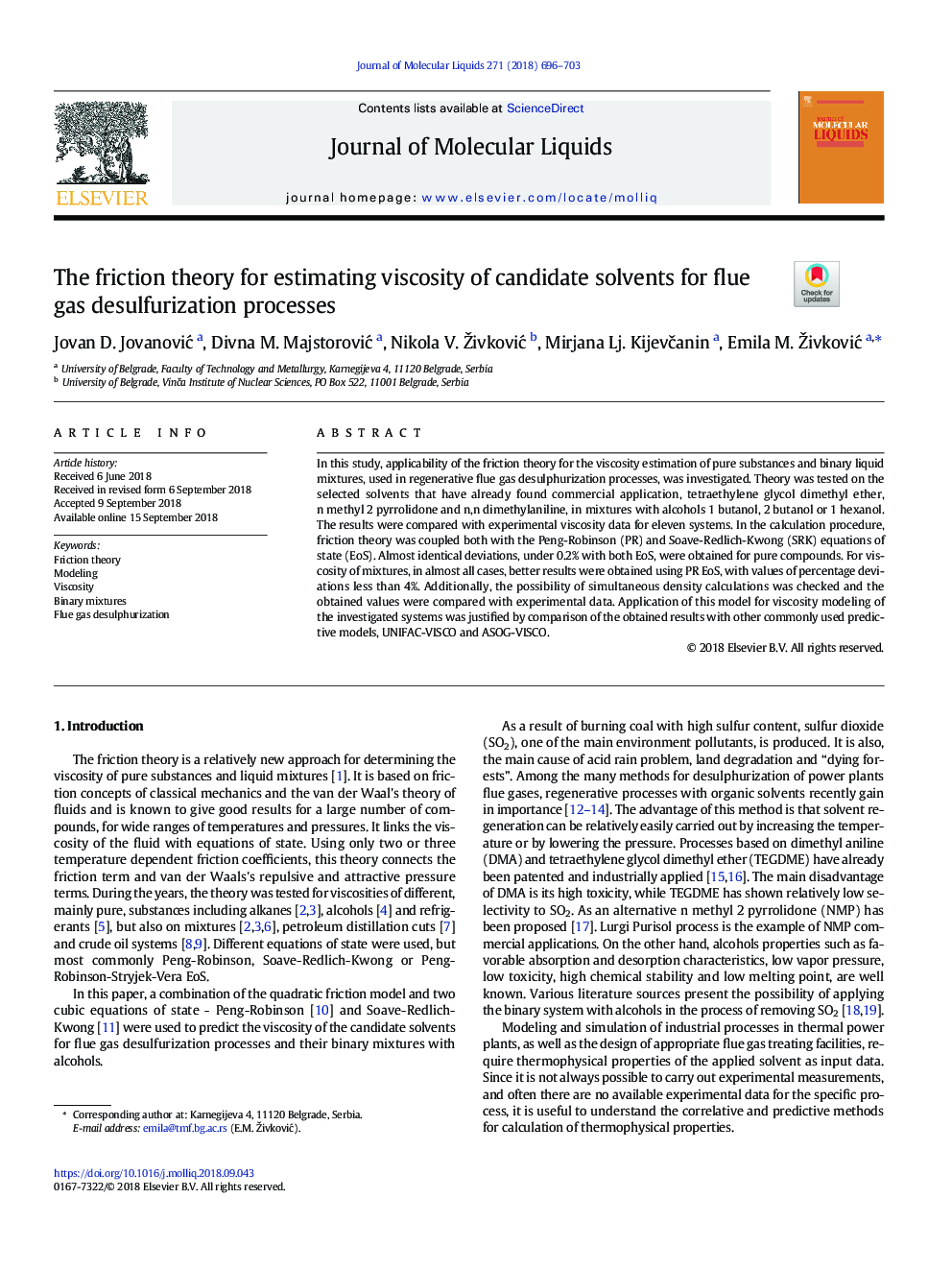| Article ID | Journal | Published Year | Pages | File Type |
|---|---|---|---|---|
| 10141639 | Journal of Molecular Liquids | 2018 | 8 Pages |
Abstract
In this study, applicability of the friction theory for the viscosity estimation of pure substances and binary liquid mixtures, used in regenerative flue gas desulphurization processes, was investigated. Theory was tested on the selected solvents that have already found commercial application, tetraethylene glycol dimethyl ether, nâmethylâ2âpyrrolidone and n,nâdimethylaniline, in mixtures with alcohols 1âbutanol, 2âbutanol or 1âhexanol. The results were compared with experimental viscosity data for eleven systems. In the calculation procedure, friction theory was coupled both with the Peng-Robinson (PR) and Soave-Redlich-Kwong (SRK) equations of state (EoS). Almost identical deviations, under 0.2% with both EoS, were obtained for pure compounds. For viscosity of mixtures, in almost all cases, better results were obtained using PR EoS, with values of percentage deviations less than 4%. Additionally, the possibility of simultaneous density calculations was checked and the obtained values were compared with experimental data. Application of this model for viscosity modeling of the investigated systems was justified by comparison of the obtained results with other commonly used predictive models, UNIFAC-VISCO and ASOG-VISCO.
Related Topics
Physical Sciences and Engineering
Chemistry
Physical and Theoretical Chemistry
Authors
Jovan D. JovanoviÄ, Divna M. MajstoroviÄ, Nikola V. ŽivkoviÄ, Mirjana Lj. KijevÄanin, Emila M. ŽivkoviÄ,
